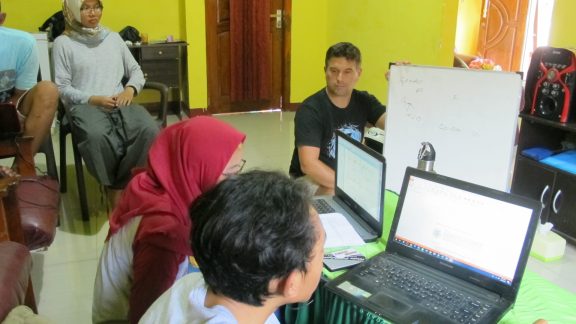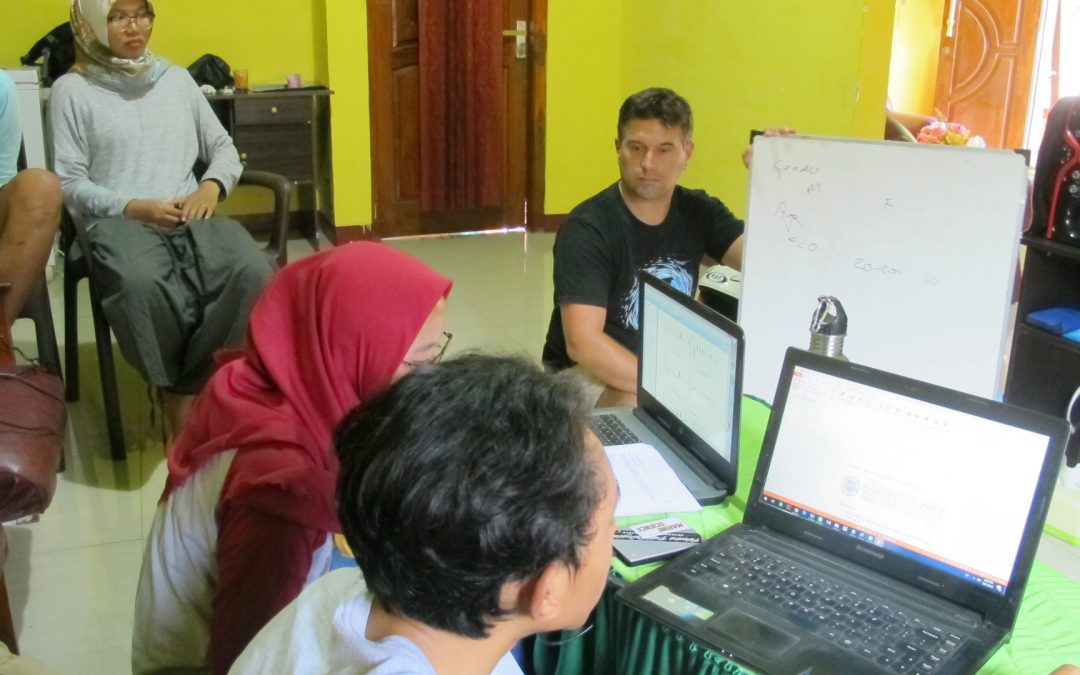After our day off we are all refreshed, and ready for the next stage of our MIP-2018 journey. It’s a new week, and a new theme. This week our theme is “collaboration”.
But first, we have to complete our tasks from last week. We are still struggling with R Studio, and our homework tasks to create and modify a map using R. We have all created the map of Komodo National Park, and successfully plotted the location of our survey dives. Our next challenge is to add a legend, but we are all confused about how to display different sized points to represent the number of mantas recorded at each site. We were stuck, but our mentors were sure that we should know the answer. Perhaps a bit of exercise could help improve our concentration, and our mentors told us to take hold a plank position for 30 seconds. It was hard work, but the funny thing is they were right! We did know the answer, and just needed a little motivation to find it and to complete our challenge.

Learning how to create a legend using R
Next, another challenge. This time to identify reef fish from a video. All the interns completed their PADI Fish Identification adventure dive last week, so this shouldn’t be too difficult, should it? We had twenty species to identify, and actually, it was pretty challenging for me because we needed to know the common name as well as the scientific name. Thankfully I was not the only one, and the other interns also struggled. It was tricky but fun, and after the quiz we spent more time discussing how to identify the various species.
Our next session was so exciting. We learned about MantaWatch’s Sustainable Fisheries programme with Vidlia. She explained about her work to reduce mobulid bycatch in small-scale fisheries using light. For me, this was a new way of thinking about conservation. Vidlia explained that the objective of this study is to evaluate the technical, social and economic feasibility of using light to reduce mobulid bycatch, because bycatch is still a major threat for mobula rays.
Through this project MantaWatch hopes to provide a solution to fishermen who can use red LED lights on their fishing nets to prevent mobulid rays becoming entangled. This was the first time that I knew mobulid rays can respond to red light while other species respond to other colours of light. I think this is a great approach for conservation, and a good way to change people’s behaviour and encourage them to take conservation action. The fishermen can continue to catch their target fish, while avoiding impacts on mobula rays. I think this will be a very useful innovation for the fisheries of Indonesia.


